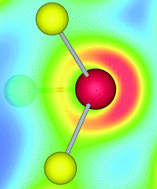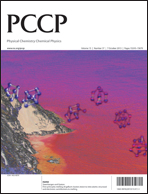Cu3MCh3 (M = Sb, Bi; Ch = S, Se) as candidate solar cell absorbers: insights from theory
Abstract
As the thin film photovoltaic sector continues to expand, there is an emerging need to base these technologies on abundant, low cost materials in place of the expensive, rare, or toxic elements such as Te, In, or Cd that currently constitute the industry standards. To this end, the geometric and electronic structure of four materials comprising low cost, earth abundant elements (Cu3SbS3, Cu3SbSe3, Cu3BiS3, and Cu3BiSe3) are investigated with the screened hybrid exchange–correlation functional HSE06 and their candidacy for use as absorber materials assessed. The materials are shown to exhibit low VBM effective masses, due partially to the presence of lone pairs that originate from the Sb and Bi states. Although all four materials possess indirect fundamental band gaps, calculated optical absorbance shows direct transitions close in energy. Optical band gaps within the visible-light spectrum are also predicted for three of the systems, (Cu3SbSe3, Cu3BiS3 and Cu3BiSe3) making them promising candidates for PV applications.


 Please wait while we load your content...
Please wait while we load your content...